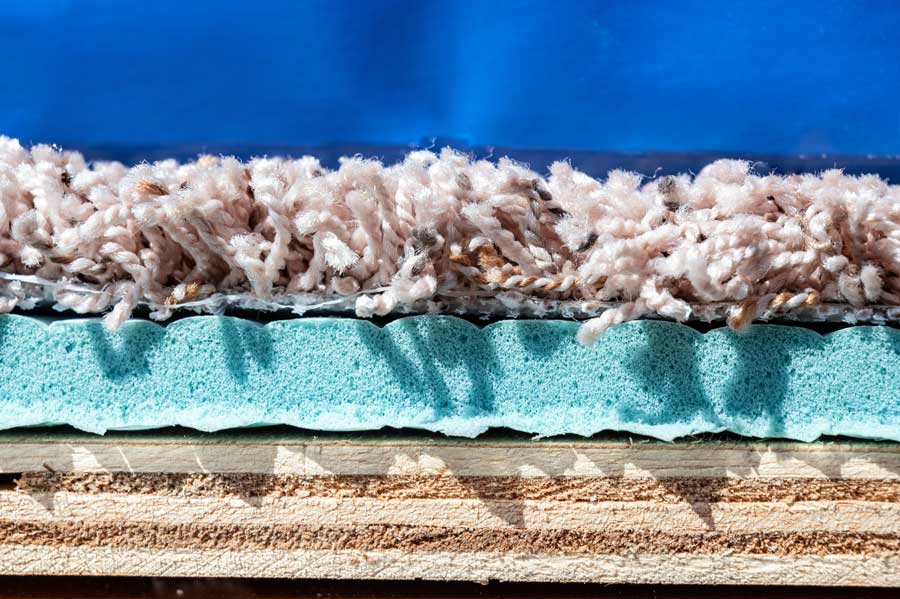
Choosing the right padding for your carpet is crucial as it can significantly impact the comfort, durability, and overall performance of your flooring. Here are some factors to consider when selecting the appropriate padding for your space.
The first consideration is thickness. The thickness of the padding affects the overall comfort of your carpet. Thicker padding provides more cushioning underfoot, making it ideal for areas where comfort is a priority, such as bedrooms or living rooms. Thinner padding may be suitable for high-traffic areas where durability and support are more important.
The density of the padding determines its ability to withstand heavy foot traffic and maintain its shape over time. Higher density padding is more durable and resilient, offering better support and preventing premature carpet wear. Lower density padding may feel softer initially, but it may compress more easily underfoot and can lead to carpet matting or flattening.
Carpet padding is available in various materials, including foam, rubber, fiber, or a combination of these. Foam padding, such as polyurethane or rebond, is the most common and cost-effective choice. It provides good cushioning and sound absorption. Rubber padding offers exceptional resilience and is suitable for areas with heavy furniture or high-impact activities. Fiber padding, made from natural or synthetic materials, provides a more eco-friendly option and is often used in low-traffic areas.
Consider the level of moisture resistance required based on the location of the carpet. In areas prone to moisture, such as basements or bathrooms, moisture-resistant padding or a vapor barrier can help prevent mold or mildew growth and protect the carpet and subfloor.
If reducing noise transmission is a concern, choose padding with sound-absorbing properties. Dense foam or rubber padding can help reduce impact noise, such as footsteps, and minimize sound transfer between floors in multi-story buildings.
And of course, be sure to consult with your carpet installer or retailer to get their recommendations based on the specific requirements of your carpet and the intended use of the space. They can provide valuable insights and help you select the most suitable padding for your carpet.
It's important to remember that the right padding for your carpet may vary depending on factors such as carpet type, traffic levels, and personal preferences. Take the time to consider these factors and consult with professionals to make an informed decision. Installing the appropriate padding will help prolong the life of your carpet, enhance its comfort, and provide a satisfactory flooring experience. And having carpet padding installed properly will prevent unpleasant problems from creeping up, like rippling carpet. If you find your carpet rippling, however, Carpet Stretch & Rescue is ready to assist you, and we can do so at just a fraction of the cost of replacing your carpet or padding too!
By Carpet Stretch and Rescue 6-13-2023
Dec 2025
Nov 2025
Oct 2025
Sep 2025
Aug 2025
Jul 2025
Jun 2025
May 2025
Apr 2025
Mar 2025
Feb 2025
Jan 2025
Dec 2024
Nov 2024
Oct 2024
Sep 2024
Aug 2024
Jul 2024
Jun 2024
May 2024
Apr 2024
Mar 2024
Feb 2024
Jan 2024
Dec 2023
Nov 2023
Oct 2023
Sep 2023
Aug 2023
Jul 2023
Jun 2023
May 2023
Apr 2023
Mar 2023
Feb 2023
Jan 2023
Dec 2022
Nov 2022
Oct 2022
Sep 2022
Aug 2022
Jul 2022
Jun 2022
May 2022
Apr 2022
Mar 2022
Feb 2022
Jan 2022
Dec 2021
Nov 2021
Oct 2021
Sep 2021
Aug 2021
Jul 2021
Jun 2021
May 2021
Apr 2021
Mar 2021
Feb 2021
Jan 2021
Dec 2020
Nov 2020
Oct 2020
Sep 2020
Aug 2020
Jun 2020
May 2020
Apr 2020
Mar 2020
Feb 2020
Jan 2020
Nov 2019
Oct 2019
Aug 2019
Jun 2019
May 2019
Apr 2019
Feb 2019
Dec 2018
Oct 2018
Jul 2018
May 2018
Mar 2018
Nov 2017
Aug 2017
Jul 2017
May 2016